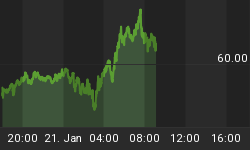August 17, 2009
On Monday the U.S. Dollar posted strong gains against most major Forex markets with the exception of the Japanese Yen as investors exited higher yielding assets following an overnight sell-off in the Chinese equity markets.
Early this morning Japan reported economic growth in the second quarter that was below expectations but nonetheless signaled an end to the recession. This news wasn't good enough for investors as they want to see sustainable evidence that a recovery is indeed taking place.
Asian markets sold off after the news from Japan with the Chinese market leading the way. Traders have also become concerned about the Chinese economy. For months China has been used as a barometer for global economic growth. Its stimulus plan has led to increased demand for commodities as well as increased stock market and loan activity. Problems could arise if Chinese regulators decide to tighten up lending and curtail excessive speculation.
If China's economy begins to decline and the U.S. recovery progresses at a slower pace than estimated then look for investors to continue to curtail demand for higher yielding assets. Based on how the Australian Dollar performed today, traders may already be lightening up positions in anticipation of this scenario taking place.
The EUR USD fell sharply lower as traders renewed selling pressure on the Euro which began following the last European Central Bank meeting on August 6th. Last week's news that the French and German economies posted gains during the second quarter has been largely ignored by investors who instead have chosen to become more averse to higher yielding assets.
News that U.K. homeowners were lowering asking prices helped pressure the already weak British Pound. The GBP USD has been selling off since the Bank of England decided to expand its quantitative easing program at its last meeting on August 6th. Furthermore comments from BoE Governor King have not been very positive. Most of them have centered on the existence of the global recession. All of this is encouraging selling of the Pound as traders are losing confidence that the U.K. economy is on the path to recovery.
Lower equity and energy prices continued to pressure the Canadian Dollar. News that China's economy may be slowing could hurt Canadian exports. The USD CAD once again rallied sharply higher in a continuation of the move which began the week ending August 7th when the Canadian government announced a surprise increase in the number of unemployed. Technical and fundamental factors are both exerting a bullish influence on the USD CAD.
The sell-off in the AUD USD was the strongest sign that demand for higher yielding assets may be coming to an end. Late last week the Australian Dollar posted a new high for the year without any follow-through. In addition, this market closed lower for the week, setting up a bearish closing price reversal top. When China's market collapsed overnight, the closing price reversal formation was confirmed. The charts indicate there is plenty of room on the downside.
The USD JPY lost ground today as Japanese investors pulled money out of higher risk assets and repatriated their funds. Investment firms that borrowed in Yen to finance the rally in the stock market also used sales proceeds to repay these loans. Look for the Yen to continue to post gains as long as investors remain averse to risk. Gains could be limited however if the Bank of Japan decides a high priced Yen will curtail demand for Japanese exports.















